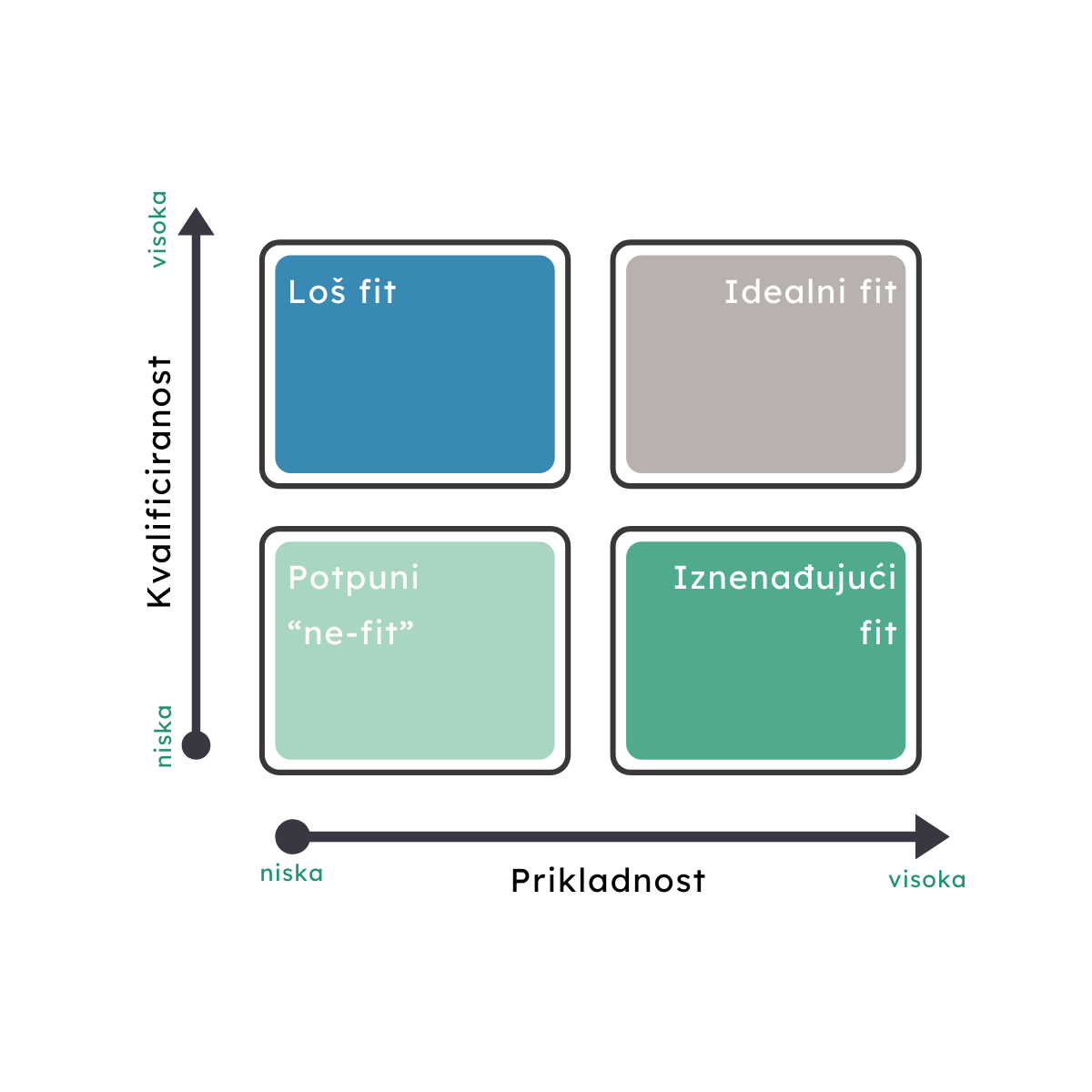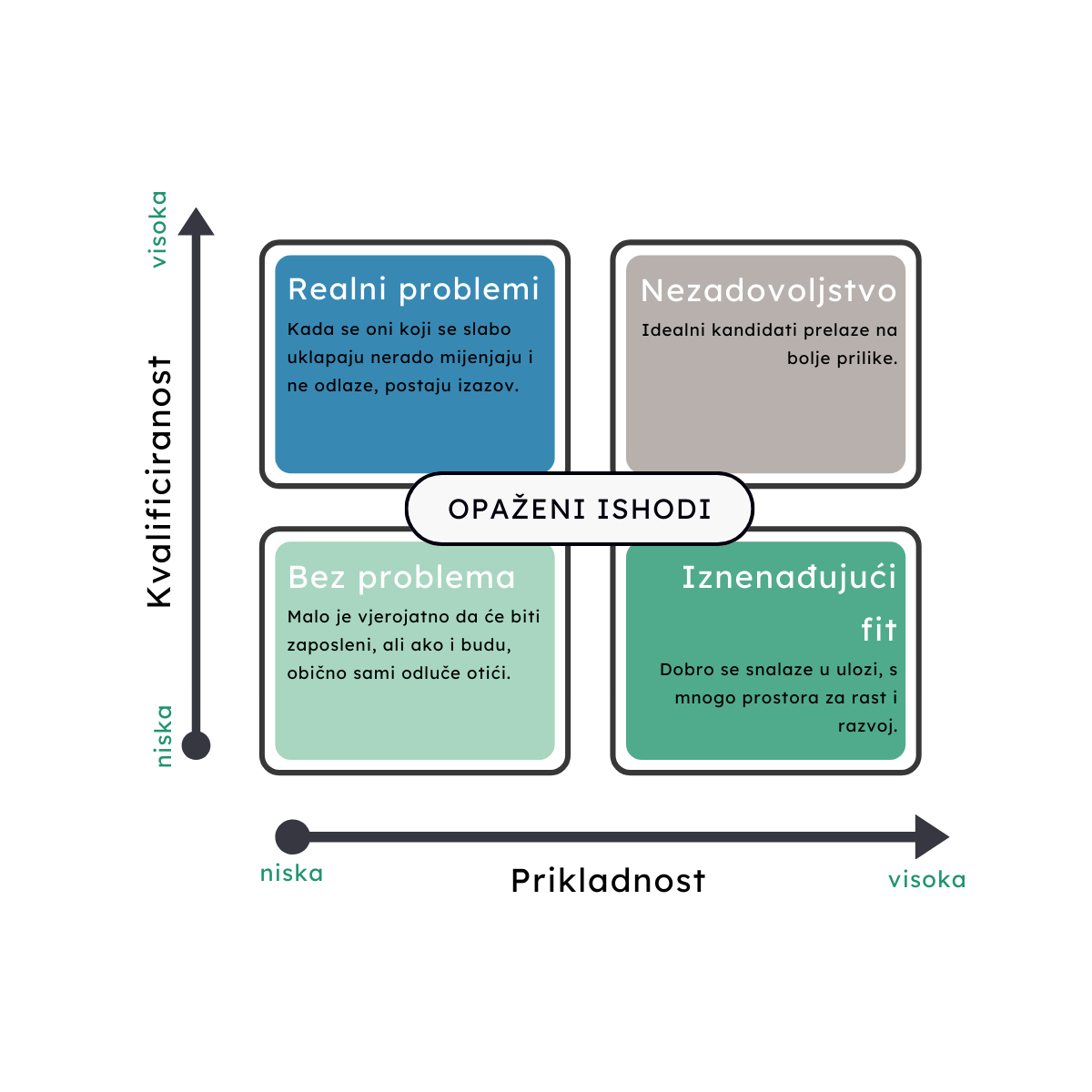At first glance, hiring the most qualified candidate for an open position may seem like the obvious choice. However, Gallup's "The State of the Global Workplace" report reveals a concerning trend: highly qualified employees in the U.S. and Canada are less engaged at work compared to those with lower qualifications. This phenomenon raises the question: Why aren't the most qualified workers the most engaged?
Distinguishing eligibility and suitability
The answer lies in the distinction between eligibility and suitability. According to Dr. Meredith Belbin, these two concepts play a crucial role in the hiring and selection process but are often misunderstood and misused:
- Eligibility refers to the measurable aspects of a candidate – education, skills, experience, and references. These elements can easily be highlighted on a resume or in an interview.
- Suitability includes less tangible aspects, such as the candidate's inclination towards a particular role, adaptability, and general team behaviour.
Organizations often focus more on eligibility during the hiring process, ignoring the importance of suitability. While qualifications and experience are significant, they don't always guarantee a good fit between the employee and the job. How often do we overlook people who may not be perfectly qualified but who fit exceptionally well in terms of behaviour and work habits?
What does it mean when a candidate is not a good "fit"?
Hiring based solely on qualifications can lead to a "bad fit," or poor alignment between the job's needs and the candidate's suitability. In such situations, employees with the necessary qualifications but without the appropriate behavioural tendencies often face difficulties. Gallup's research indicates that such workers often feel they cannot do what they do best every day. This leads to feelings of frustration and dissatisfaction, resulting in decreased engagement. For example, we encounter managers who, despite having formal experience in team management, task delegation, and goal setting, do not align with their teams. Their leadership style often doesn't match the team's needs. Instead of focusing on developing team members and maintaining team cohesion, they are more focused on results and task coordination, which can be at odds with what the organization actually needs. When such managers leave the company, it's often said that "their vision for managing the company or team didn't align with the company's vision." This is frequently highlighted as the main reason for a manager leaving the company.
On the other hand, employees who may be less qualified but show a high level of suitability for the job often perform better. Although they may not be ideal candidates on paper, they show a greater willingness to learn and adapt, leading to greater loyalty and long-term success.
In other words, eligibility not only does not guarantee a good "fit" with the job but can hinder it. It's clear that certain jobs require specific qualifications and that a general skill set is necessary. However, we tend to overestimate those candidates who already possess the required hard skills and overlook the "semi-qualified" ones: those who, with training and on-the-job experience, could stay in the role longer, become valuable contributors, and more closely identify with their jobs.
People can be trained to learn new skills, as long as there is enough interest, inclination, and motivation.
When an employee has the opportunity to work "in their role" (in terms of team roles), it increases their confidence, while identifying training needs – and crucially, providing the necessary training – enables individuals to further grow in the role. The benefits of such a hiring model are often long-term.
Four categories of employee fit
Following the Belbin methodology, we can distinguish four categories of fit between the employee and the job:
- Complete Misfit: Candidates who are neither qualified nor suitable typically quickly realize the job isn't for them and leave.
- Bad Fit: These employees have the necessary qualifications but not the behavioural tendencies. They often feel defensive and frustrated because they can't meet the job's demands despite their qualifications. The organization also notices that they don't meet the employer's behavioural expectations.
- Ideal Fit: Here, candidates are both qualified and suitable for the job. While this seems like an ideal scenario, Belbin found that these employees often leave the job quickly because they lack challenges and opportunities for growth.
- Surprising Fit: These are employees who may not have all the necessary qualifications but have the right behavioural tendencies. They often perform best in the role because they see opportunities for growth and development, which motivates them to stay and advance. Their "vision" of the role aligns with what the employer expects.

What if you don't have a candidate who is a good "fit"?
"If you can't change the person, change the person" succinctly captures the challenge many employers face. We all have certain "manageable" team roles, or behaviours that we can develop to adapt to a particular role. However, significant changes in these behaviours are rare, and an unsuitable candidate will never provide the ideal alignment between person and job, no matter how good they look on paper.
In such situations, instead of trying to adapt the employee to their current role, it’s often better to consider whether that person might be better suited to another functional role within the organization. Follow the principle – if someone reaches the upper right corner, either enlarge the square or move them to a new square.

How to assess whether a candidate is a good "fit"?
Qualifications are an important but not the only factor that determines an employee's success. Suitability for the team role, the tendency to learn and adapt, and the willingness to develop are crucial for long-term employee success and engagement.
Instead of focusing solely on qualifications, consider the candidate's behavioural tendencies and team suitability. Only then will you find employees who will do the job well and who will also be engaged, motivated, and loyal.
Tools like Belbin can be very useful in this process because they provide insight into how a candidate will fit into team dynamics and how engaged they will be at work. While it doesn't offer a definitive answer on whether to hire someone, this tool helps identify a candidate's suitability for a team role, which is crucial for long-term success.
Can the Belbin tool be used for other purposes?
Yes. In addition to the selection phase, the Belbin report can be useful in earlier stages of recruitment. It helps managers and HR teams accurately define the type of person needed for a particular position, with an emphasis on the inclinations and behaviours that are key to success. The information provided by the report can be used when preparing job descriptions and advertisements, contributing to better internal communication and stronger employer branding.
The Belbin tool can be applied for various purposes, including:
candidate selection and assessment
succession planning
job role systematization
job description preparation and employer branding
In the case of hiring for positions that are specific to certain projects and ways of working, which don't always match standard job titles, Belbin helps develop job role profiles and align skill and trait requirements that are crucial for success in a particular role.
One of the main benefits of the Belbin method is identifying the different perspectives that various participants in the recruitment process have about a particular position or role before even starting interviews with candidates. This tool allows organizations to more accurately define what is truly important for a particular position, thereby improving the job advertising process and increasing confidence in selecting candidates with the right skills and traits. Using the tool can significantly enhance hiring efficiency by providing a clearer overview of the organization's needs and ensuring that candidates who best match the organization's specific requirements and goals are selected.
Belbin: discover 9 team roles that react differently to stress



